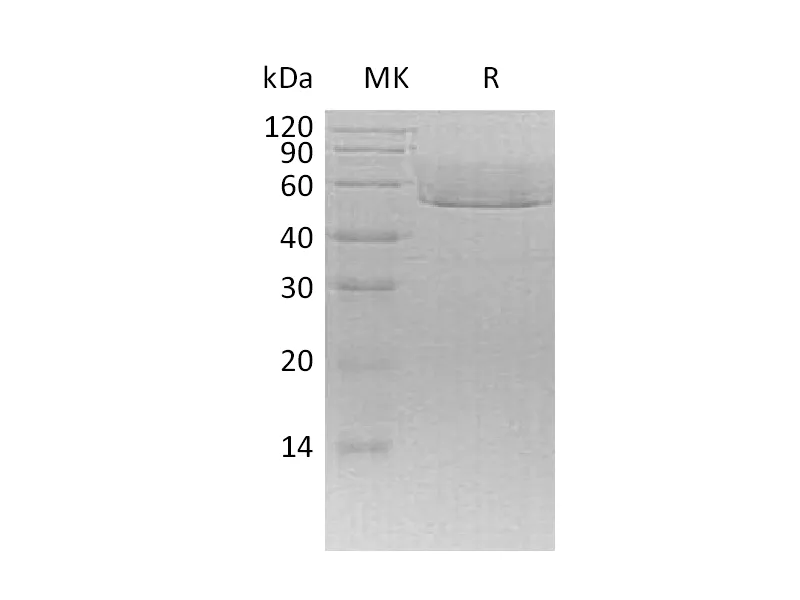
Size2:50μg price2:$248
Size3:500μg price3:$1680
| Name | Recombinant Mouse CX3CL1 (C-6His) |
| Purity | Greater than 95% as determined by reducing SDS-PAGE |
| Endotoxin level | <1 EU/µg as determined by LAL test. |
| Construction | Recombinant Mouse C-X3-C motif Chemokine 1 is produced by our Mammalian expression system and the target gene encoding Gln25-Arg337 is expressed with a 6His tag at the C-terminus. |
| Accession # | O35188 |
| Host | Human Cells |
| Species | Mouse |
| Predicted Molecular Mass | 34.3 KDa |
| Buffer | Lyophilized from a 0.2 μm filtered solution of 20mM PB, 150mM NaCl, pH 7.4. |
| Form | Lyophilized |
| Shipping | The product is shipped at ambient temperature.Upon receipt, store it immediately at the temperature listed below. |
| Stability&Storage | Store at ≤-70°C, stable for 6 months after receipt.Store at ≤-70°C, stable for 3 months under sterile conditions after opening. Please minimize freeze-thaw cycles. |
| Reconstitution | Always centrifuge tubes before opening.Do not mix by vortex or pipetting.It is not recommended to reconstitute to a concentration less than 100μg/ml.Dissolve the lyophilized protein in distilled water.Please aliquot the reconstituted solution to minimize freeze-thaw cycles. |
Alternative Names
Fractalkine; C-X3-C motif chemokine 1; CX3C membrane-anchored chemokine; Neurotactin; Small-inducible cytokine D1; Cx3c; Fkn; Scyd1; CXC3; CXC3C; ABCD-3; SCYD1; C3Xkine; NTN; NTT
Background
Fractalkine(CX3CL1) is a single-pass type I membrane protein and belongs to the intercrine delta family. It consists of an extracellular NH2-terminal domain, a mucin-like stalk, a transmembrane α helix, and a short cytoplasmic tail. CX3CL1 exists in two forms: as a membrane-anchored or as a shed 80-95K glycoprotein. Soluble CX3CL1 is generated by limited proteolysis on the cell surface, and a disintegrin and metallopeptidase 10 (ADAM10) and ADAM17/tumor necrosis factor-α-converting enzyme (ADAM17/TACE) participate in this shedding. It has been suggested that ADAM10 acts in the constitutive shedding, and ADAM17 acts in response to cell activation. The protein may play a role in regulating leukocyte adhesion and migration processes at the endothelium.
Note
For Research Use Only , Not for Diagnostic Use.
